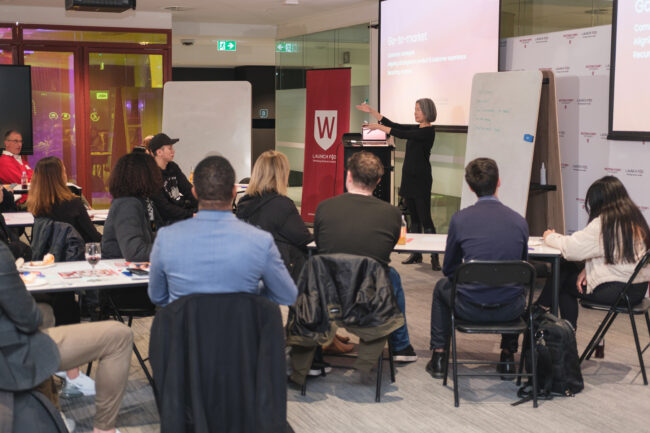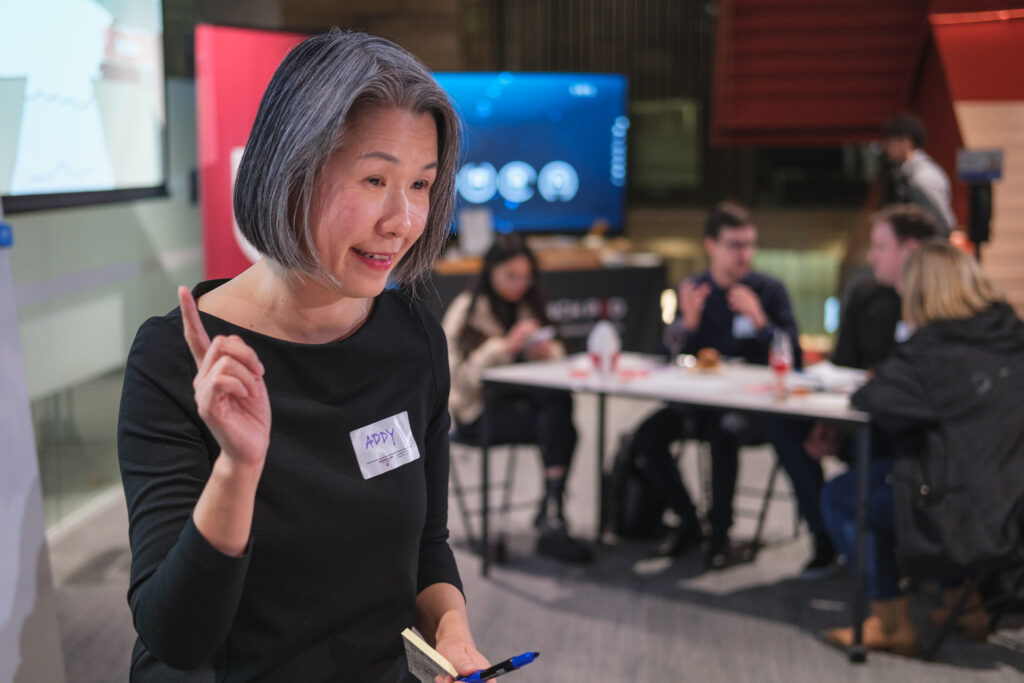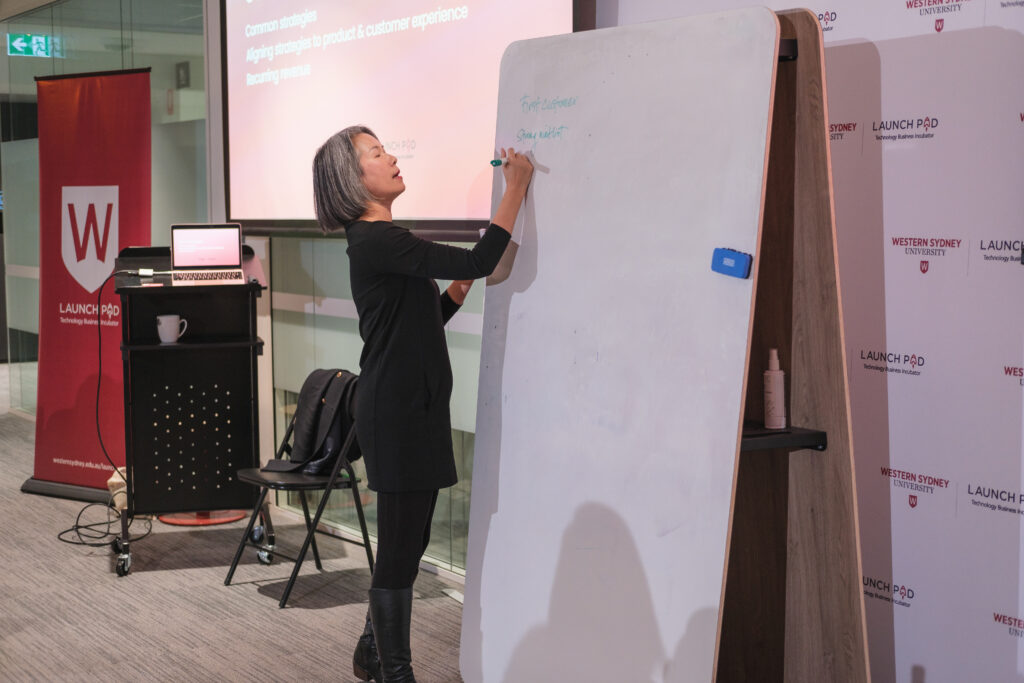HomeBlogEducationEventsLaunch PadProgramSmall BusinessSMEStartup AcceleratorsStartupsStudentsVenture MakersWestern SydneyWestern Sydney UniversityHave You Mastered Your Go-to-Market Strategy Yet?
Have You Mastered Your Go-to-Market Strategy Yet?
Have You Mastered Your Go-to-Market Strategy Yet?
The highly anticipated Launch Pad’s Booster Masterclass event that took place on 27 June 2023 with Adeline Chu (otherwise preferred to be known as ‘Addy’) unleashed key takeaways for an effective go-to-market (GTM) strategy.
The GTM Booster Masterclass with Addy was a session that ignited insightful discussions and knowledge-sharing to the extent that most participants stayed up to an hour after the event concluded. In a banquet-style conference setup, it was a workshop that fostered active audience participation. Addy’s teaching style to ask and answer questions as she went which made it more comfortable and easier for the audience to engage. The interactive nature of the workshop, included group activities, brainstorming sessions, and collaborative problem-solving exercises where participants could share their stories, idea, business proposals and had the opportunity to seek personalised advice and guidance from an expert in the industry.

A robust GTM strategy is significant to launching and scaling successful ventures. Addy explained that successful GTM strategies fundamentally must be pragmatic, tangible, and granular.
In the world of Addy, GTM consists of:
- implementing common strategies
- alignment of strategies to product and customer experience
- and recurring revenue
Value Proposition:
“Someone needs to believe they want to exchange money for it”
Addy explores how everything that is in existence today or newly “invented” is a replacement of something else, another product, another service, another process that has already existed in a different way. Historically, humans have always found a way to live their lives. So why do we settle for age-old solutions when newer, more innovative alternatives can elevate our daily experiences?
The key lies in convincing individuals that the value of the “new” product or service is worth exchanging their money for.

Value proposition presents an opportunity to develop the current solution provided to the customer, communicating how the business can address recognised needs.
Addy’s GTM value proposition model consists of:
- The Problem: identifying the gap in the industry that the customer is facing
- The Customers: understanding the stakeholders affected
- The Solution: recognising the resources required
- The Opportunity: the outcome of utilising the solution to resolve the identified problem
Campaign and Sales:
“Simple is best”

After selling to the first customer, the focus of campaigns and sales is on retention of the current customer base and then growth and retention of that growth.
Addy introduces the AIDA model:
- Awareness: customer seeking, educational, articulation
- Interest: solution in the context of pain points, how does a product resolve a need and how does a need translate into the production of a product
- Desire: a product or service that provides a guide, consists of testimonials, references, social engagement
- Action: a call to purchase, close to deal, procurement, a contract
Pivoting:
“Know your customer”
Sometimes it is not always as easy as creating a product and convincing consumers to demand. A company that produced drones were initially focused on selling the drones without a linear focus on the customers they were supplying to. The founder decided to pivot to the mining industry. Traditionally, mine-site managers had to take a helicopter to visit each mine-site to view the progress of the site and to make a report.
Problem: they spent all day in the air, had no work-life balance and less chance to see their families
Customer: the mine-site managers
Solution: use of drone technology
Opportunity: the drones can simultaneously monitor the mine-sites at once saving the mine-site managers on travel time between mine-sites, allowing them to have more work-life balance and the ability to go home to their families every night
When pivoting, founders need to focus on scale. The drone company went to all the mining, construction, engineering conferences where mine-site managers were known to congregate and using less time and resources, were able to scale a larger majority of clients without having to individually sell to each mine.
Customer choice:
“Nudge people onto a new pattern of behaviour defined by you”
There are two reasons why customers buy:
- Emotional – a choice based on customer want or desire to purchase
- Logical – a choice that avoids cognitive dissonance (buyer regret)
There are two business models that generate revenue:
- Business model – is about a business creating value
- Revenue model – is about different revenue streams
- Transactional revenue – ownership via a one-time transaction
- Subscription revenue – temporary access via smaller periodic payments

In Summary:
Going to market means a business needs to make these decisions on:
- Value proposition – How much to charge customers so that they are happy to pay?
- Pivoting – How to bring on board more customers?
- Choice – How customers stay on as customers year on year?
So are you ready to go to market today? Or do you need that extra validation to push your business into market?